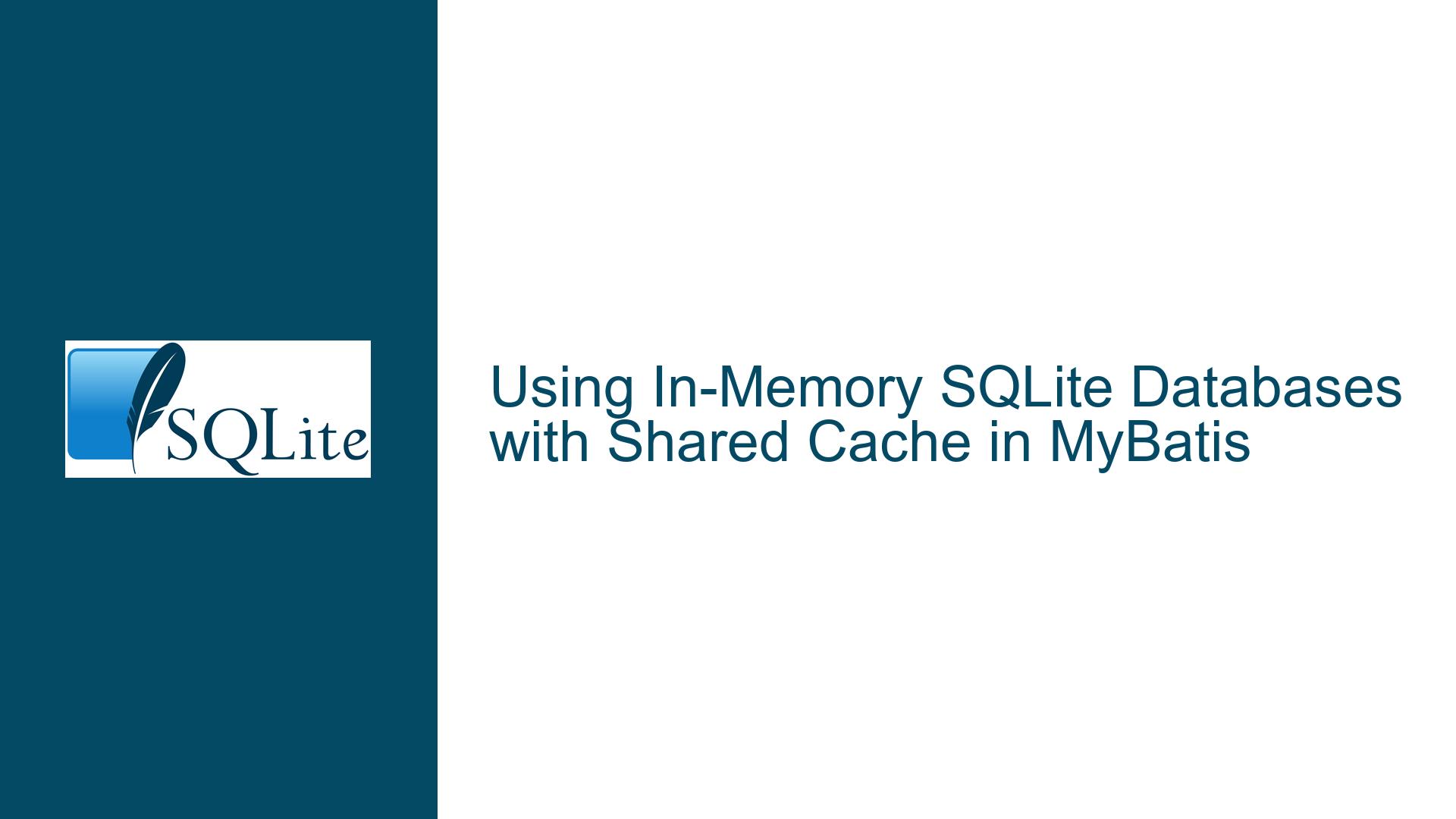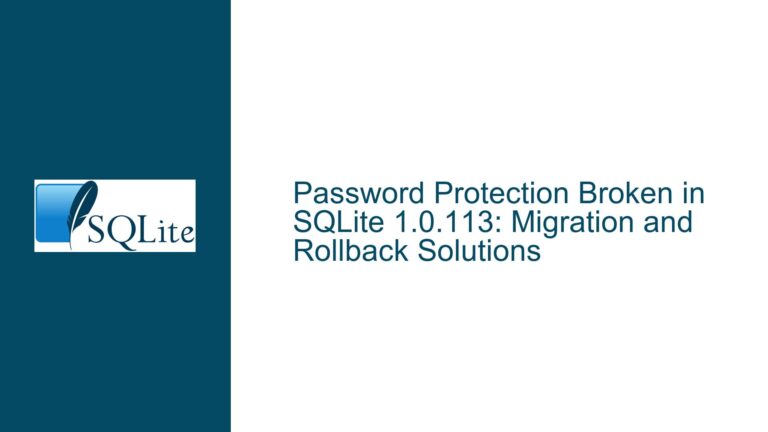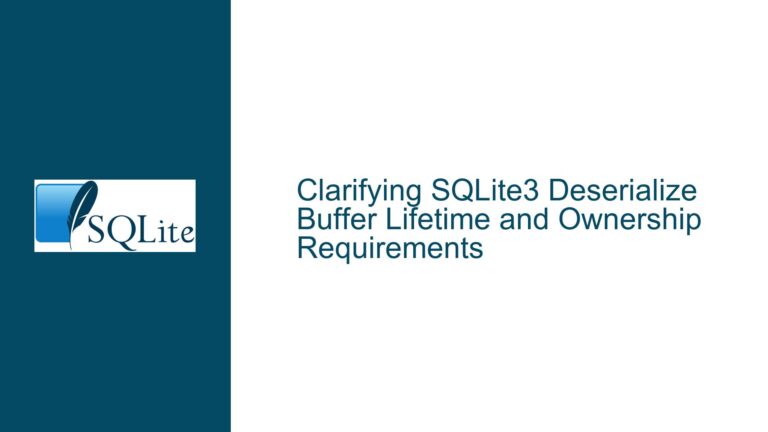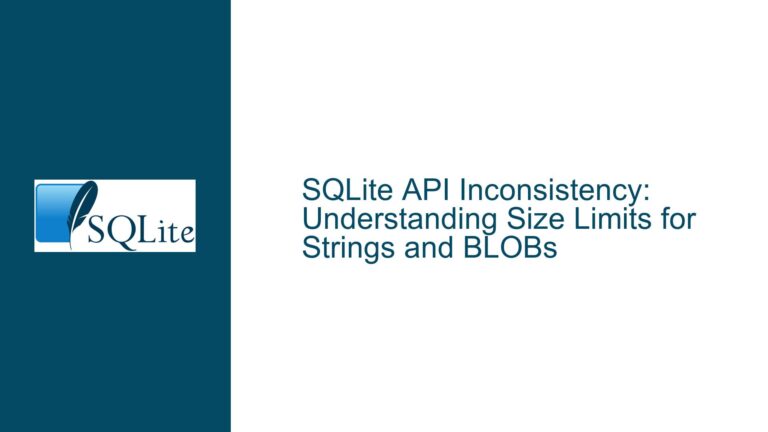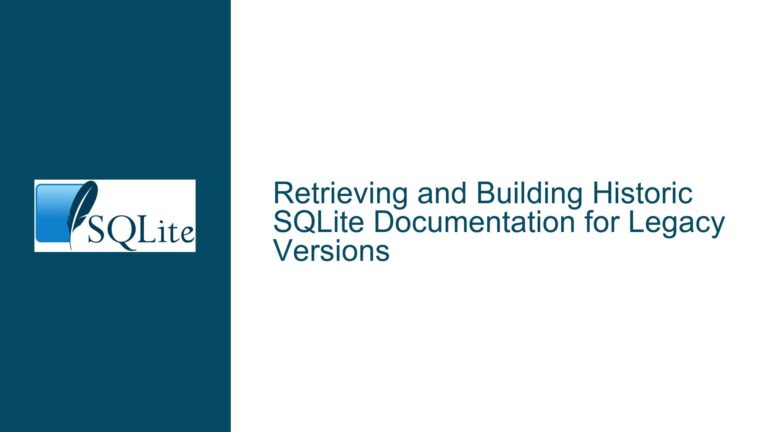Using In-Memory SQLite Databases with Shared Cache in MyBatis
In-Memory SQLite Database Misconfigured as File-Based Database
When attempting to configure an in-memory SQLite database with shared cache in MyBatis, a common issue arises where the database is mistakenly treated as a file-based database instead of an in-memory one. This typically manifests when the database URL is incorrectly formatted or misinterpreted by the underlying JDBC driver or MyBatis configuration. The result is the creation of a file named :memory:?cache=shared on the filesystem, which is not the intended behavior. The goal is to ensure that the database resides entirely in memory, leveraging SQLite’s shared cache feature for efficient multi-connection access.
The core of the problem lies in the configuration of the JDBC URL and the interaction between MyBatis, the JDBC driver, and SQLite’s URI handling. SQLite supports in-memory databases through the :memory: keyword, and shared cache can be enabled using the cache=shared parameter. However, the JDBC URL must be correctly structured to ensure these features are properly utilized. Misconfigurations can lead to the database being treated as a file-based database, defeating the purpose of using an in-memory database.
Incorrect JDBC URL Format and URI Handling Issues
The primary cause of this issue is the incorrect formatting of the JDBC URL. SQLite requires a specific URI format to enable in-memory databases with shared cache. The URL must include the file: prefix followed by :memory: and the cache=shared parameter. Without the file: prefix, the JDBC driver or SQLite may misinterpret the URL, leading to the creation of a file-based database instead of an in-memory one.
Another potential cause is the lack of URI support in the SQLite library being used. SQLite’s URI handling must be enabled at compile time. If the library was compiled without URI support, attempts to use URI-based configurations will fail. Additionally, the JDBC driver or MyBatis may interfere with the URL, altering it before it reaches the SQLite API. This can happen if the driver or framework does not fully support SQLite’s URI syntax or if there are bugs in the implementation.
The version of the SQLite JDBC driver also plays a role. Older versions may not fully support the latest SQLite features, including URI handling and shared cache. Ensuring that the correct version of the driver is used is crucial for proper functionality. The driver must pass the URI directly to the SQLite API without modification, allowing SQLite to interpret the URL correctly.
Correcting JDBC URL Format and Ensuring URI Support
To resolve this issue, the JDBC URL must be correctly formatted to include the file: prefix, :memory: keyword, and cache=shared parameter. The correct URL format is jdbc:sqlite:file::memory:?cache=shared. This ensures that the database is created in memory and that the shared cache feature is enabled. The file: prefix is necessary for SQLite to recognize the URL as a URI and process it accordingly.
Before applying this fix, it is essential to verify that the SQLite library being used supports URI handling. This can be done by checking the library’s documentation or by inspecting the source code if available. If URI support is not enabled, the library must be recompiled with the appropriate flags or replaced with a version that supports URIs.
The SQLite JDBC driver must also be updated to a version that fully supports SQLite’s URI syntax and shared cache feature. The driver should pass the URL directly to the SQLite API without modification. The following code snippet demonstrates the correct configuration for MyBatis:
db.env=localdb
db.driver=org.sqlite.JDBC
db.url=jdbc:sqlite:file::memory:?cache=shared
db.username=
db.password=
In addition to the URL format, it is important to ensure that the JDBC driver’s implementation correctly handles the URI. The driver should check for the file: prefix and the cache=shared parameter and pass them to the SQLite API. The following code snippet from the SQLite JDBC driver demonstrates how this is done:
public final synchronized void open(String file, int openFlags) throws SQLException {
this._open(file, openFlags);
this.closed.set(false);
if (this.fileName.startsWith("file:") && !this.fileName.contains("cache=")) {
this.shared_cache(this.config.isEnabledSharedCache());
}
this.enable_load_extension(this.config.isEnabledLoadExtension());
this.busy_timeout(this.config.getBusyTimeout());
}
This code ensures that the shared cache is enabled if the URL contains the file: prefix and the cache=shared parameter. If the driver does not handle the URI correctly, it may be necessary to modify the driver’s source code or switch to a different driver that supports the required features.
Finally, it is recommended to test the configuration thoroughly to ensure that the database is indeed created in memory and that the shared cache feature is functioning as expected. This can be done by connecting to the database from multiple threads or processes and verifying that they share the same cache. If the database is still being created as a file, further investigation into the JDBC driver and SQLite library may be required.
By following these steps, the issue of an in-memory SQLite database being misconfigured as a file-based database can be resolved, ensuring that the database operates entirely in memory with shared cache enabled. This configuration is ideal for applications that require fast, temporary storage with efficient multi-connection access.
